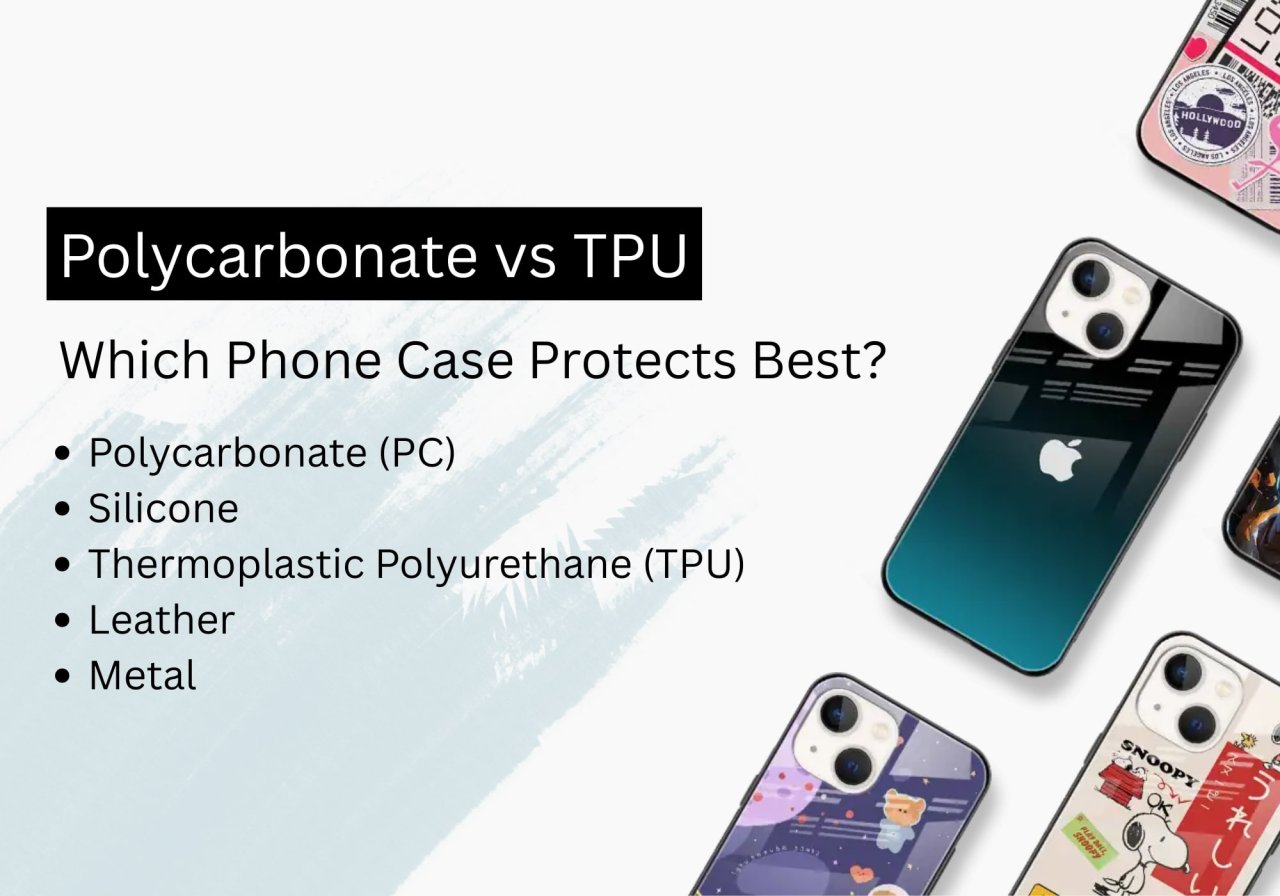iPhone or Samsung Which is Better?
iPhone or Samsung? Explore the differences in performance, camera, battery, and overall experience to...
2 days ago
Choosing the right phone case isn’t just about style—it’s about protection, durability, and comfort. With so many options available, understanding the different types of phone case materials is key to keeping your device safe. From flexible TPU to sturdy polycarbonate, each material offers unique advantages and drawbacks.
We’ll start by exploring what are phone cases made of, giving you a clear idea of the materials behind the protection. Then, we’ll dive into a comparison between polycarbonate and TPU, highlighting their differences in strength, flexibility, and everyday usability.
Next, we’ll examine whether a polycarbonate case is good or bad, helping you decide if this popular material is right for your needs. Finally, we’ll share the best material for phone case, so you can choose the perfect balance of style, protection, and convenience.
By the end of this guide, you’ll have a complete understanding of phone case materials and be ready to pick the one that offers the ultimate protection for your device.
Advantages
High impact resistance – PC is strong and can withstand shocks, making it ideal for protective applications.
Durable and long-lasting – Resistant to breaking or cracking under stress.
Flexible – Can bend slightly without breaking, adding to its durability.
Weatherable – Can withstand various environmental conditions without degrading quickly.
Affordable – Relatively cost-effective compared to other high-strength plastics or materials.
Customizable & aesthetically versatile – Available in vibrant colors, creative designs, and can be easily molded for different shapes.
Widely used in various industries – Applications include lenses, bulletproof windows, medical devices, automotive parts, and electronics.
Disadvantages
Not entirely scratch-resistant – Can be prone to surface scratches, requiring additional coatings for protection.
Limited shock absorption alone – Often combined with more flexible materials like silicone or TPU for better impact absorption and grip.
May require extra protection for certain uses – To maximize scratch and drop resistance, additional treatments or materials may be needed.
Advantages
Exceptional flexibility – Can absorb shocks better than most other phone case materials.
Performs well in extreme cold – Can withstand temperatures as low as -75°F (-60°C) without degrading.
Soft, grippy texture – Reduces the risk of phones slipping from your hands.
Durable and resilient – Maintains performance in a variety of conditions.
Disadvantages
Higher cost – More expensive than many other phone case materials due to complex production processes.
Limited industrial use – Not as widely used across industries, which reduces economies of scale and keeps prices higher.
Advantages
Highly versatile – Can be produced in hard or soft forms and easily molded into various shapes.
Strong and durable – Provides excellent protection for smartphones, sometimes outperforming rubber.
Elastic and abrasion-resistant – Resistant to wear, grease, and oil, maintaining performance over time.
Affordable – Cost-effective compared to some other protective materials.
Widely used – Found in products like car seats, furniture, and packaging due to its versatility.
Disadvantages
Hygroscopic tendencies – Can absorb water under certain conditions, potentially affecting durability.
May require reinforcement – Soft TPU cases sometimes need additional cushioning or a hard shell for optimal protection.
Advantages
Luxurious design – High-end appearance and premium feel.
Strong protection – Excellent resistance against falls and impacts.
Heat dissipation – Metal cases help prevent phones from overheating.
Disadvantages
Higher cost – More expensive than wood, plastic, or rubber cases.
Heavier weight – Adds more bulk compared to lighter materials.
Potential signal interference – Can affect phone signals if not properly designed.
Advantages
Luxurious look and feel – Premium appearance and tactile experience.
Unique patina over time – Genuine leather ages beautifully, creating a personalized look.
Added functionality – Flip or wallet-style cases provide extra storage and screen protection.
Disadvantages
Higher cost – More expensive than many other materials.
Lower impact resistance – Less protective against drops and shocks compared to plastics or metals.
Susceptible to stains and microtears – Can wear or stain over time, especially with faux or vegan
Polycarbonate (PC) is a strong, durable, and impact-resistant thermoplastic that is flexible, weatherable, and affordable. It offers vibrant designs and wide customization but is not fully scratch-resistant and often needs a coating or combination with softer materials for better shock absorption.
Thermoplastic Polyurethane (TPU) is a versatile elastomer available in hard or soft forms, providing excellent elasticity, abrasion resistance, and strong impact protection. It is affordable and moldable but can absorb water under certain conditions and may require additional cushioning or a hard shell to maximize protection.
Why they’re good:
Potential drawbacks:
Verdict: Polycarbonate cases are generally a good choice for protection and style, especially when combined with a softer material for extra cushioning.
iPhone or Samsung? Explore the differences in performance, camera, battery, and overall experience to...
2 days agoWhich Mobile is Best for Camera in 2025? Explore the top smartphones with the best camera quality, advanced...
8 months agoall iPhone 17 features, specifications, and real user feedback. Explore design, camera, display, performance,...
26 days ago